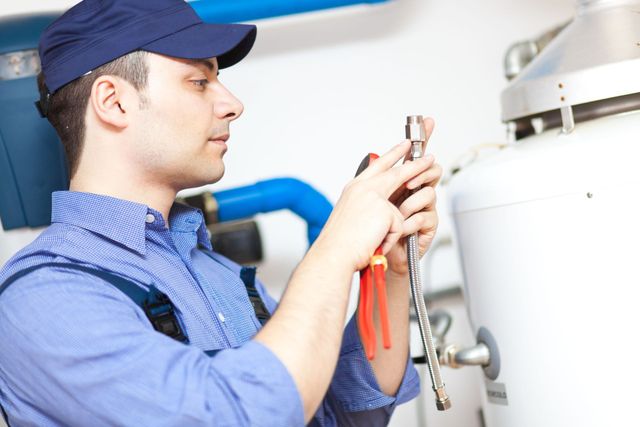Step-by-Step Guide to Maintaining Your Home's Hot Water SystemSteps on How to Care for Your Home's Hot Water System ProperlyEffective Techniques for Caring for Your Home's Hot Water System
Step-by-Step Guide to Maintaining Your Home's Hot Water SystemSteps on How to Care for Your Home's Hot Water System ProperlyEffective Techniques for Caring for Your Home's Hot Water System
Blog Article
The content down the page relating to How to Maintain Your Water Heater & Prolong its Life is totally interesting. You should see for yourself.

Warm water is essential for everyday convenience, whether it's for a revitalizing shower or washing meals. To guarantee your hot water system runs efficiently and lasts longer, routine upkeep is vital. This short article gives practical tips and insights on exactly how to keep your home's warm water system to stay clear of disruptions and expensive repair services.
Intro
Keeping your home's warm water system might seem complicated, but with a few easy steps, you can ensure it operates smoothly for many years to find. This overview covers every little thing from recognizing your warm water system to do it yourself upkeep tips and recognizing when to hire specialist assistance.
Value of Keeping Your Warm Water System
Routine maintenance not only extends the life-span of your warm water system yet additionally guarantees it operates efficiently. Overlooking maintenance can cause reduced effectiveness, higher energy costs, and also early failure of the system.
Indications Your Hot Water System Needs Upkeep
Understanding when your warm water system requires interest can prevent significant problems. Watch out for signs such as inconsistent water temperature level, unusual noises from the heating unit, or rustic water.
Flushing the Hot Water Heater
Purging your water heater removes debris accumulation, enhancing effectiveness and extending its life.
Checking and Changing Anode Rods
Anode rods avoid deterioration inside the container. Evaluating and replacing them when worn out is crucial.
Facility Problems Requiring Specialist Aid
Instances include significant leaks, electric issues, or if your water heater is continually underperforming.
Regular Professional Maintenance Benefits
Expert maintenance can consist of extensive inspections, tune-ups, and guaranteeing conformity with security standards.
Checking and Adjusting Temperature Level Settings
Changing the temperature setups guarantees optimum performance and safety and security.
DIY Tips for Upkeep
You can carry out several maintenance jobs yourself to maintain your hot water system in top problem.
Checking for Leakages
Frequently inspect pipes and links for leaks, as these can cause water damages and higher costs.
Comprehending Your Warm Water System
Before diving into upkeep tasks, it's valuable to recognize the basic parts of your hot water system. Normally, this consists of the water heater itself, pipes, anode poles, and temperature level controls.
Regular Monthly Maintenance Tasks
Regular regular monthly checks can aid catch minor problems prior to they rise.
Checking Stress Relief Valves
Evaluating the pressure safety valve guarantees it functions correctly and protects against excessive pressure accumulation.
Protecting Pipelines
Shielding warm water pipes minimizes warmth loss and can conserve power.
When to Call a Professional
While DIY maintenance is helpful, some concerns require expert competence.
Verdict
Normal upkeep of your home's warm water system is essential for efficiency, durability, and expense financial savings. By adhering to these pointers and recognizing when to look for specialist aid, you can make certain a trusted supply of warm water without unanticipated disturbances.
Water Heater Maintenance: The Basics
Maintaining your water heater will ensure it operates efficiently and has a longer lifespan. Neglecting regular maintenance can lead to costly repairs and an even bigger chunk of your savings if you have to replace it sooner than necessary. But there’s good news: Most water heater maintenance tasks are relatively simple and easy for homeowners with basic DIY skills.
Flush the Water Heater
Over time, sediment and minerals can build up in the tank, reducing its efficiency and potentially causing damage. To flush the tank, turn off the power or gas supply, attach a hose to the drain valve near the bottom and open the valve to drain the water until it runs clear. Ideally, flush the tank annually.
Replace the Anode Rod
The anode rod is a sacrificial metal rod that helps prevent corrosion inside the tank. Inspect and replace it every three to five years or per the manufacturer's recommendation. To replace the anode rod, turn off the power or gas supply, drain a few gallons of water from the tank, unscrew the old rod and replace it with a new one. If the anode rod is significantly corroded or covered in calcium buildup, it's a sign the water heater may need to be replaced soon.
Tune-Up
A yearly tune-up can help identify potential issues and ensure your water heater operates at peak efficiency. This typically involves checking the thermostat, burner assembly (for gas heaters) and any other components specified by the manufacturer. During a tune-up, the technician may also clean the burner and adjust the pilot light (for gas heaters) or examine the heating elements (for electric heaters).
How to Maintain Your Water Heater
Insulate the tank. Insulating the tank can improve energy efficiency and reduce heat loss, saving you money on energy bills. You can purchase precut insulation blankets designed specifically for water heaters or use standard fiberglass insulation wrapped securely around the tank. Check the temperature. The recommended water temperature for most households is around 120 degrees Fahrenheit (49 degrees Celsius). Higher temperatures can increase energy costs and potentially cause scalding. Use a kitchen thermometer to check the temperature at the faucet nearest the water heater. Monitor water pressure. Excessive water pressure can strain the water heater and cause leaks or even tank failure. Install a pressure-reducing valve if necessary. The ideal water pressure range is between 60 and 70 PSI (pounds per square inch). Test the temperature and pressure (T&P) relief valve. The T&P relief valve is a safety feature that releases pressure if the tank gets too hot or the pressure builds up too high. Test it annually by lifting the lever and allowing a small amount of water to release. Replace the valve if it doesn't release water or reseal properly. Check for leaks. Regularly inspect the tank, pipes and fittings for leaks or corrosion. Deal with issues promptly to prevent further damage. Even a small leak can lead to significant water damage over time. Consider a tankless water heater. If your traditional tank-style water heater is nearing the end of its lifespan ( typically 10 years), consider replacing it with a tankless water heater. These units heat water on demand, reducing standby energy losses and potentially saving you money on your energy bills. Schedule professional maintenance. While homeowners can perform many water heater maintenance tasks, it's still a good idea to schedule professional maintenance every few years. A plumber or HVAC technician can thoroughly inspect the unit, identify potential issues and ensure it operates safely and efficiently. https://www.homeserve.com/en-us/blog/home-improvement/hot-water-heater-maintanence/

We had been made aware of that article about Tips on Maintaining a Water Heater from a friend on another site. Kindly take a moment to distribute this blog if you enjoyed it. I cherish your readership.
Click Here Report this page